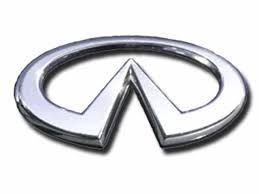QX4 V6-3.5L (VQ35DE) (2001)
/Page-379008.png)
If you do not have a Hunter GSP 9700 balance machine (or comparable equipment), locate a repair facility equipped with one in your area by logging on
to www.hunter.com or calling 1-314-731-3020. Hunter will connect you with a service representative who can assist you.
1.
Check the inflation pressure of all four tires and adjust to 26 PSI, if needed.
2.
Repeat the Road Test Procedure.
NOTE:
Completing the Road Test Procedure will "exercise" the tires and address any possible "cold" flat spotting that may have occurred due to
short-period vehicle storage or parking (see Short-Period/Cold Flat Spotting for details). It is also necessary to perform the road test as specified to
get an accurate RFV Measurement.
Never check RFV without first driving the vehicle as noted and "exercising" the tires. If the vehicle's tires are not exercised first, accuracy of RFV
measurements can vary 2 or 3 times the actual values, even if the vehicle is parked/stored in one location for only a short period of time (20 minutes).
Perform the RFV measurement immediately after exercising the tires. If the RFV measurement cannot be performed immediately, lift all four wheels off
the ground with a hoist or jack and stands to prevent measurement errors due to further flat spotting.
3.
Follow the operation instructions of the Hunter GSP 9700 machine (or equivalent) to measure RFV of all four tire/wheel assemblies.
NOTE:
If you are using the Hunter GSP 9700 machine, use the "Details" pop-up screen to obtain Radial 1st and 2nd Harmonic Values (RH1 and RH2).
RH1 and RH2 values are accessed by pressing the K4 key twice from the primary screen after the spinning operation is completed.
4.
Identify tires/wheel assemblies with excessive RH1 and/or RH2 values using the information given.
5.
If the vehicle is equipped with Original Equipment (OE) Bridgestone tires, rotate the incident tires/wheel assemblies to ensure they are placed
correctly to meet RH1 and RH2 requirements as listed above in the table (step 4).
If RH1 and RH2 requirements cannot be met through tire/wheel assembly rotation, replace incident tires with appropriate tires listed in the PARTS
INFORMATION section to achieve total RH1 and RH2 numbers for the front and rear axles as specified above in the table (step 4). Match and
install the tires/wheel assemblies with the lowest RH1 and RH2 values on the front axle.
If the vehicle is equipped with Non-Bridgestone OE tires (i.e. Toyo, Dunlop, etc.) and the RH1 and RH2 requirements listed in the table (step 4)
above cannot be met by rotating the incident tires/wheel assemblies, replace all four tires with appropriate tires listed in the PARTS
INFORMATION section on to achieve total RH1 and RH2 numbers for the front and rear axles as specified. Match and install the tires/wheel
assemblies with the lowest RH1 and RH2 values on the front axle.
NOTES:
Lubricate the tire bead and mating surfaces of the wheels when mounting. Use an appropriate fast drying tire mounting lubricant to prevent liquid
from being trapped inside the tire.
Match and position the red dot on the tire sidewall in line with the blue/gray/white dot on the wheel. If the paint dots are wiped off or missing, use
the Hunter GSP 9700 machine tire/wheel match mounting feature to achieve the best RFV fit.
